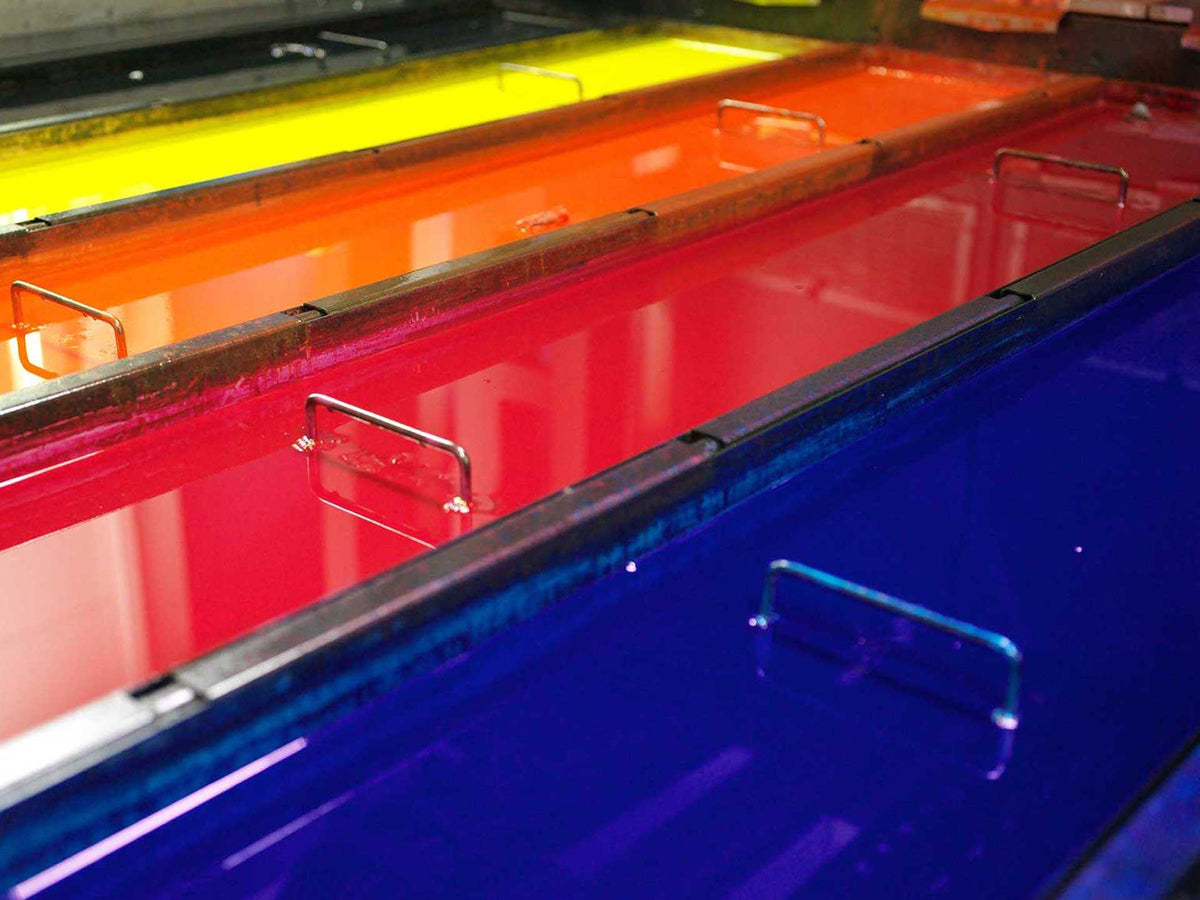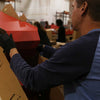

Choosing Between Litho And Digital Printing?
When starting a new project, you’ll typically be offered two processes: litho and Digital Printing. Your choice will impact the finished product, budget, and timeframe. The differences and advantages of each printing style will help you make the right choice.
The simplest difference between the two is that Litho (Offset) needs to create printing plates, and Digital allows you to upload custom artwork directly to the digital press.
While Litho can be a better choice for a single-design large-volume order, Digital has changed the game and opened up new marketing possibilities.
Table Of Contents
What Is Litho-Lamination?
Litho Lamination (Offset Printing) is a traditional printing method and was the most popular choice until recently. Litho is the process of printing onto paper liner board and then laminating that onto corrugated paper.
Using oil and water, it creates a positive and negative plate to transfer high-quality color graphics onto suitable substrates.
Offset lithography is based on the concept that oil and water repel one another. Lithographic presses utilize two print plates—a positive and a negative—to transfer high-quality color graphics onto a suitable substrate.
The positive plate, with its smooth surface, attracts oil-based inks and repels water. In contrast, the negative plate, with its rough texture, absorbs water and repels oil. Rubber rollers are then used to transfer the image from the plate to the corrugated surface.
A separate print plate is needed for each color to print (CMYK).
Advantages of Litho-Laminated
Corrugated paper can sometimes prove to be a challenging surface to print on, but Litho prints to a separate surface and is then laminated to it, making it easy to print high-quality images.
It can be extremely consistent, even for long runs. In fact, the more you print, the cheaper the costs become for Litho. If you need tens of thousands of identical designs, then Litho might be the right choice.
Litho Printing Advantages
- One-size-fits-all design
- Large volume of a single design
- Efficient production
- High quality
- Unit cost decreases as the quantity increases
- Long runs without losing quality
Where Litho Falls Short
The biggest issue with Litho is the project lead time, and tooling costs. Because of the printing plate design process, a unique design must be created and manufactured. This takes several weeks and costs thousands of dollars before you even get your first print.
If you have enough time and budget, and a large volume of a single design, then there shouldn’t be an issue.
What Litho doesn’t give you is exactly what Digital does, customization. More on that later.
Litho Printing Disadvantages
- Expensive set up
- Longer turnaround
- No Variable Data Printing
- Smaller color gamut, colors can be less bright
What is Digital Printing?
Digital printing is the process of printing digital images directly onto the corrugated substrate using a single-pass, direct-to-corrugate technique.
Instead of paying for or creating printing plates, digital printing allows you to upload files directly to the press and print.
This simplifies the process and opens up numerous marketing and design possibilities!
Advantages of Digital Printing
Traditional printing methods like Offset Printing have been the status quo for some time, and one of the biggest reasons is that at large volumes, it wins on cost.
But that’s if you plan to use a single design for all of your packaging - those days are over.
Offset Printing requires time and money to create a Printing Plate, while Digital Printing allows you to simply upload an art file (as many as you want) to the Press. For every design, product variation, or promotion, you’ll need to create a new plate, which will skyrocket the cost.
Digital Printing Advantages
- Variable Data Printing (VDP)
- Print-on-demand
- Unique product designs
- Seasonal + Promotional messaging
- Cost-effective short productions
- Faster turnarounds
Where Digital Falls Short
If your project has a single design, Litho might be a better choice due to the scaling costs of production. There are other reasons to choose Litho, but as mentioned earlier, the days of a one-size-fits-all design are over.
Digital Printing Disadvantages
- Single-design costs
- Not suitable for all surfaces
Related: Printing Coating Options
Digital Printing Means Personalization
In today's fast-changing industry, customers are searching for more personalized expertise. That implies that all brands need to adjust their approach as soon as possible.
When they buy their goods, customers have an appetite for marketers to create this personal experience for them - and digital helps you to do this.
Today, most brands underuse print personalization because they are simply unaware of the practice's possible advantages and that digital printing is the way to get there.
High Speed Digital Press
A variety of digital printers are available on the market, but we were one of the first to invest in technology and chose the Barberán Jetmasters. These are some of the most dependable and efficient digital printers on the market.
This method enables many benefits, including:
Digital Ink
Digital printing inks include orange, blue, and green; specialty dry inks for cyan, magenta, purple, and black toner and ink; and expanded gamut color inks.
The UV inks used are more durable and dry out faster than, for example, the water-based inks used in industrial flexography.
As UV inks dry immediately, they are less absorbed by the paper than those dependent on water.
- Match your brand colors - exactly
- 6-Color Extended Gamut
- Brighter Colors
- No print variance
- Superior gloss grade
Reduced Tooling Costs
No print plates are needed for Digital Printing.
No Minimums
Digital’s biggest strength is a lack of minimum prints needed for a cost-effective run. Print 1-1,000.
Speed To Market
Are there sudden market changes there? Still. Always! Now, think that you could alter your package template by the end of the day for a new print design?
Digital lets you print at the pace of thought. To be the first to pounce on a new concept, you should change your messaging and style, no matter what's going on in the industry.
Single Pass Direct-To-Corrugate
Based on "Single-Pass" technology and inkjet printheads, our printers can directly print digital images with a single pass, without contact, on multiple foil types and weights.
That means one print station, not a station for each color pass! That’s a faster and cheaper production.
- Super Wide Printing Area
- True-Production Proofs
- Food-friendly inks
- Humidity has no influence on drying
- Less waste
- No water needed for cleaning
4 Simultaneous Print Queues
While our largest printer allows you to print Super-Wide designs, you can also divide the printing area up and have 4 simultaneous print queues. That means you can upload 4 unique art files, have them print at the same time, and change the work on the fly.
No other printing technique allows you to do this!
Flexibility
The Jetmasters print with UV inks that dry quickly and can print on low-quality and/or low-weight paper, such as test liners or recycled paper, achieving excellent print quality.
Optimization
By optimizing the size of the drop and the processing of the image, we obtain printing results with a broad chromatic range while using the minimum amount of ink.
The fact that there is no direct contact with the substrate means that the printing is of higher quality, without contamination or compression; printing in both directions of the wave is also possible.
Which Printing Method is Right for You?
Choosing between litho lamination and digital printing depends on your project needs. Digital is on its way to taking over the industry, mainly due to its customization.
With digital printing, you have the power to create a new look for your display every time you need a new production run. This flexibility allows you to present a fresh, brand new look at retail every time, without the constraints of additional costs.
If you need a single design for an entire campaign, then maybe Litho is right for you. But remember, your up-front budget and lead time will have to be taken into consideration.
Need help deciding which printing method is best for you?
Bennett Offers All Printing Solutions
Bennett is a premier packaging and retail displays manufacturing company striving to protect and promote our clients' products with customized corrugated solutions. When you work with us, you’re part of the family. We will partner with you every step of the way.
With our fully integrated design-to-delivery process, we can be the single supplier source. We are an award-winning manufacturer of virtually anything corrugate. We offer everything from plain brown shipping boxes to sophisticated, high-graphic printed point-of-purchase displays and everything in between.
Frequently Asked Questions
What is a Digital Press?
A Digital Press is designed to print digital images using digital ink onto various substrates. They vary in size and technology, but they allow you to upload art files directly to the press, instead of creating printing plates.
What is Digital Printing?
Digital Printing is when you print a digital-based image onto some form of print media. Compared to traditional methods, it allows for a more versatile printing style and allows you to create unique designs for different product sizes.
What is Variable Data Printing?
Variable Data Printing (VDP) means printing completely custom designs for your customers. This is only possible with Digital Printing, and it leads to a new level of personalization.
What is Litho Lamination?
Litho Lamination (Offset Printing) is a traditional printing method and was the most popular choice until recently. Litho is the process of printing onto a paper liner board, and then laminating that onto corrugated. Using oil and water, it creates a positive and negative plate to transfer high-quality color graphics onto suitable substrates.




